Cloudflare vs Cloudfront Differences
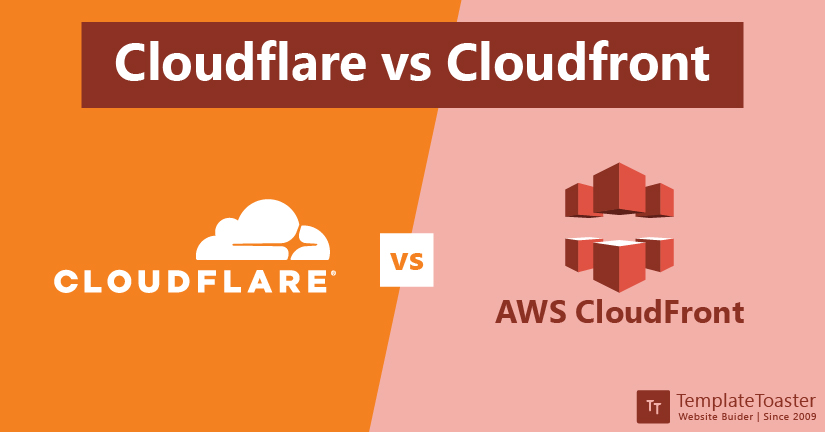
Cloudflare and Cloudfront are popular Cdns services. They both offer some different features, services, pros and support which can be useful to your business/website in a unique manner. In this article, I will compare Cloudflare vs Cloudfront with pros and cons to find out which one is better for your website.
Content delivery network or CDN is a interconnect network of servers placed in different locations that keeps a cached version of your static website content. When a visitor requests for content from your website, the nearest CDN server will respond to that request for faster load time. The aim is to reduce the travel distance for the request and data for faster and efficient delivery. It results in better web experience and user engagement.
About Cloudflare
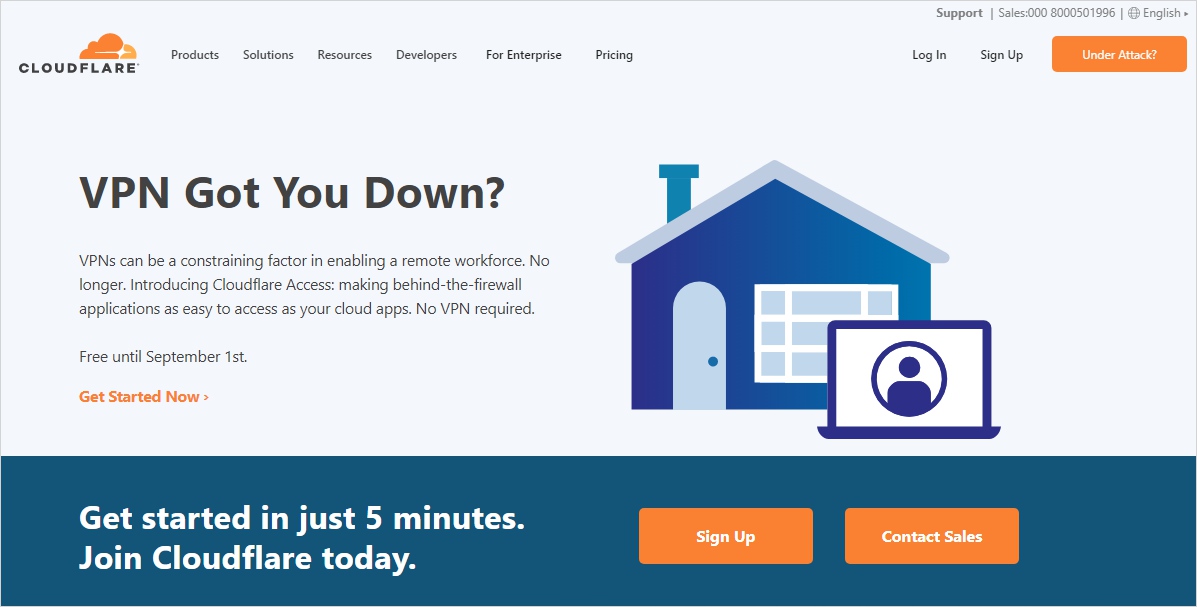
Cloudflare is a buzzing brand in the CDN industry for its ability to offer advanced performance capabilities and strong security features. It is basically a reverse proxy and its infrastructure is built from scratch, without any legacy system. It was originally intended to work as a security system to keep the scammers away from your website and prevent them from harvesting emails. Their global infrastructure and algorithm offers advanced security systems along with performance enhancement. Machine Learning integration with cloudflare infrastructure enables it to learn, adapt, and integrate constantly to meet the advanced needs of the constantly changing technical landscape.
What is the history of Cloudflare?
Matthew Prince thought about how people get spam emails? Therefore, Matthew Prince, Lee Holloway, and Michelle Zatlyn developed a system, basically a reverse proxy system to prevent the scammers from harvesting emails off a website. However, they noticed that their infrastructure and algorithm was also boosting the speed of the websites. Therefore, they commercialized the system as a CDN system. As of 2017, they are serving around 12 million startup websites with their free version.
What are the features of Cloudflare?
Some of the features of Cloudflare are as mentioned below:
Fast and global CDN: Its fast global CDN infrastructure accelerates the internet applications and mobile experience, to ensure application availability. In other words, its network of 200 data centers in different countries can reduce the latency and can improve the web experience of global users, dramatically.
Improved web experience: Rather than sending all the requests from different corners of the world onto a single server, the requests are distributed on Cloudflare’s 200+ servers placed in different locations. It balances the workload of the servers and keeps the content available to users.
Web content optimization: Cloudflare offers smart optimization of the content by removing unnecessary characters from HTML, JavaScript, and CSS to reduce the size of the files of a website. It also uses the local storage to cache the objects that are needed to achieve the best rendering of websites. Reduced size of the file will load faster, hence, better performance.
Advanced WAF: Cloudflare also offers adequate security solutions for enterprise-level websites to combat severe security attacks that can degrade the performance of a website. Cloudflare’s Web Application Firewall has a history of combating severe DDoS attacks successfully, at a peak rate of 400GB. Furthermore, WAF applied rules are automatically updated whenever security threats are discovered. You may also like to read the comparison of other CDNs i.e. Sucuri vs Cloudflare, Imperva vs Cloudflare, Fastly vs Cloudflare, Cloudflare vs Stackpath, Cloudflare vs Akamai.
Pros and Cons of Cloudflare
Pros of Cloudflare:
- Offers Argo smart routing
- AutoMinify for smart content optimization
- Web and browser optimization
- SSL/TLS, Web Application Firewall, Secure Application access for advanced security.
- Free shared SSL certificate
- Unlimited and unmetered bandwidth consumption
- Image optimization with Polish
- PCI compliance and prioritizes email support for eCommerce websites.
Cons of Cloudflare:
- Possibility of man-in-the-middle forgery
- Unsolvable roadblocks can degrade the performance
- Lowered usability due to unnecessary captcha
- Some of the advanced features like ‘log access’, are available to expensive plans only.
Cloudflare pricing:
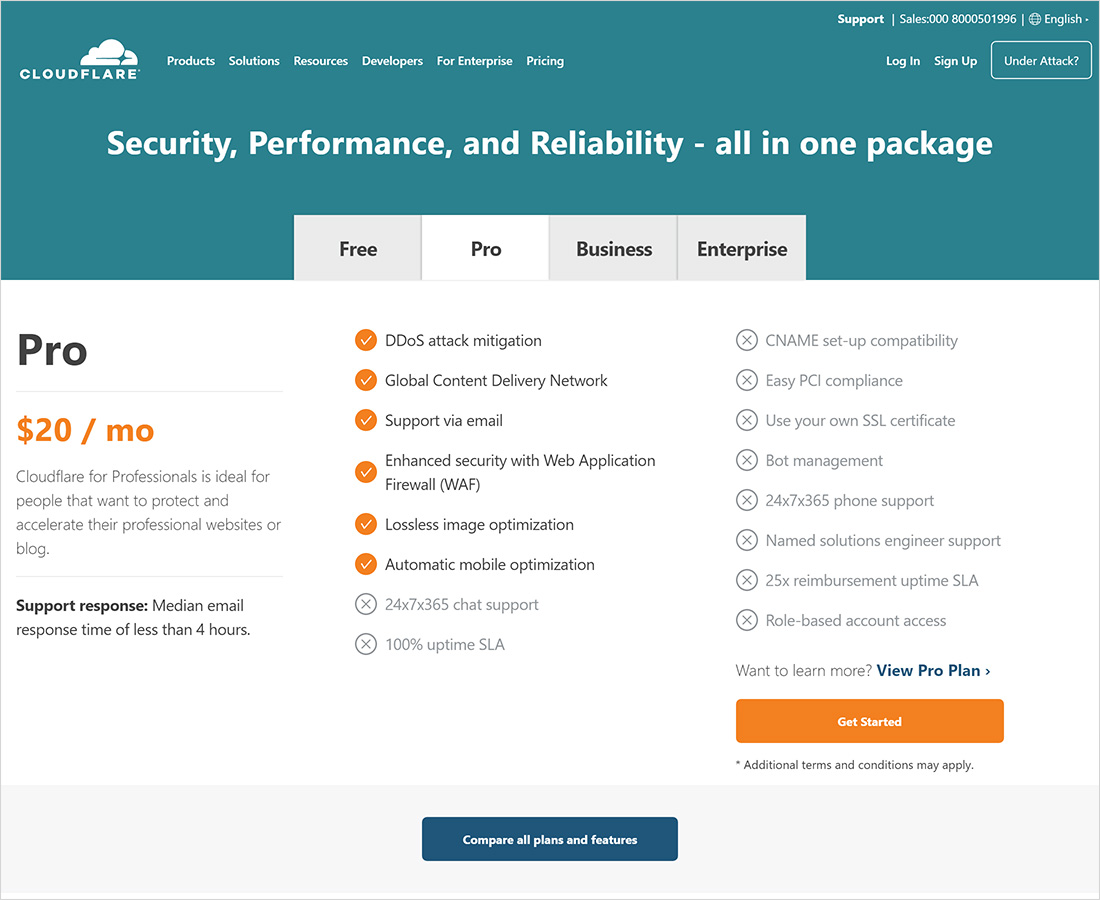
About Cloudfront
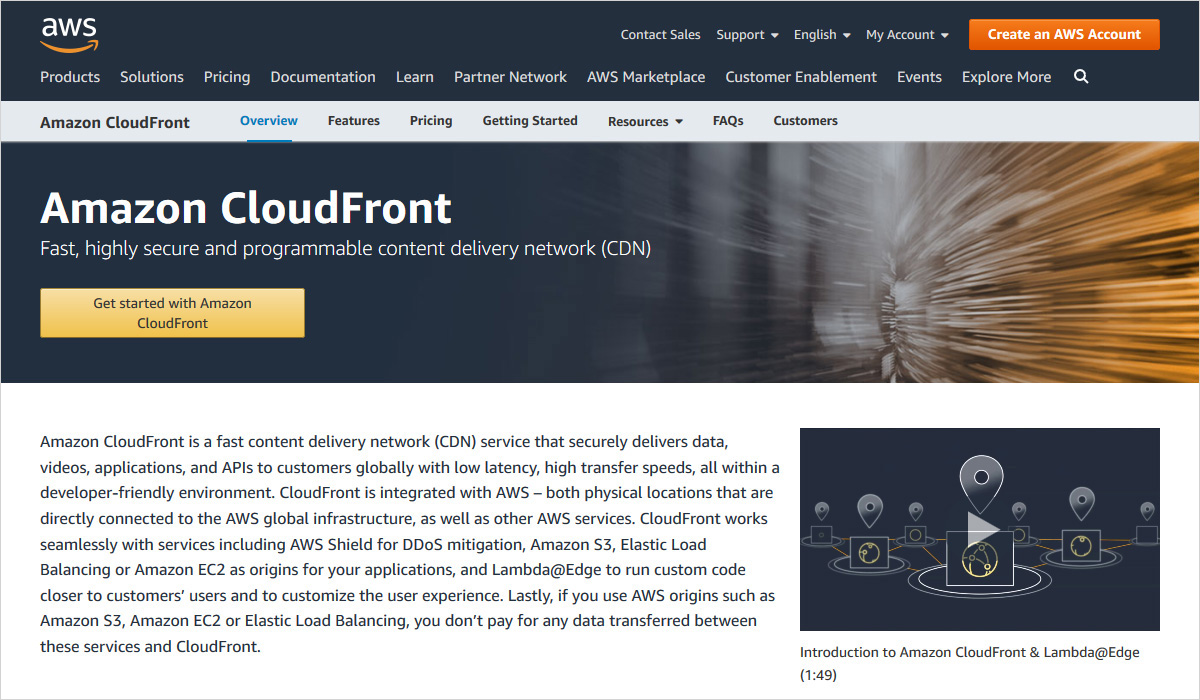
Cloudfront is another top global CDN (Content Delivery Network) that retrieves data from Amazon S3 bucket and distributes it on multiple data centers it acquires. It makes use of a network of data centers, also known as Edge Locations, to deliver the data. When a user requests for data on the internet, the nearest edge location is routed, resulting in lowest latency, low network traffic, faster access to content, and overall better web experience.
What is the history of Cloudfront?
Cloudfront is an extended service of Amazon. The beta version of Cloudfront was launched in November 2008. They re-launched Cloudfront service in January 2009 with reduced pricing tiers. Cloudfront is constantly increasing their Edge Locations. They added the feature of logging capability, support for private content, Cloudfront streaming, etc, over a course of time. In 2014, they also announced a free tier.
What are the features of Cloudfront?
Some of the features of Cloudfront are as mentioned below:
Global: Amazon CloudFront is a multi billion company that has a global network of edge locations spread across different regions of the world.
Faster: Due to its global network of edge location, Cloudfront undoubtedly is a faster CDN. It caches copies of content on its Edge locations and serves the content to its nearest user, resulting in faster delivery of the requested content. It reduces the latency effectively, increases data transfer rates, hence, a great web experience.
Reliable: Amazon Cloudfront is the most reliable content delivery infrastructure. Its Edge locations are known to automatically reroute the end users to the next nearest location, depending on the situation.
Elastic services: Amazon Cloudfront offer the service elasticity better than any other CDN services out there. It automatically responds if any action is needed, in case the demand increases or decreases. Therefore, clients/users don’t have to worry about the maintenance.
Integrated AWS services: There is a wide range of services offered by Amazon and the best part of using Cloudfront is that it can easily be integrated with other AWS services including Amazon S3, Amazon EC2, AWS Lambda@Edge, AWS Elemental MediaStore and MediaPackage, Amazon CloudWatch, etc.
Pros and Cons of Cloudfront
Pros of Cloudfront
- Cost-effective as they charge pay-per-usage
- Seamless integration with other AWS services
- Elastic services, which means you can increase or decrease your capacities depending on your current need. You will be charged according to your usage.
- Diverse location coverage as its Edge locations are spread in different continents including North America, South America, Asia, Europe, and Australia.
- Offers meaningful insights via report charts that allow you to track trends in data transfer and requests for your website.
- Private content feature that lets you control access over your content.
- Amazon, a tech giant is behind Cloudfront.
Cons of Cloudfront
- Although Cloudfront pricing follows the pay-per-use model, scalability can cost you higher than expected. Basically, a website with low traffic can easily afford it but the increase in the traffic, your bill also increases, which can become expensive for you.
- You don’t get a lot of visibility into the underlying Cloudfront structure.
- You have to pay extra if you want to seek the technical assistance from Cloudfront.
- Integration is a bit complex as compared to other CDNs
Cloudfront Pricing:
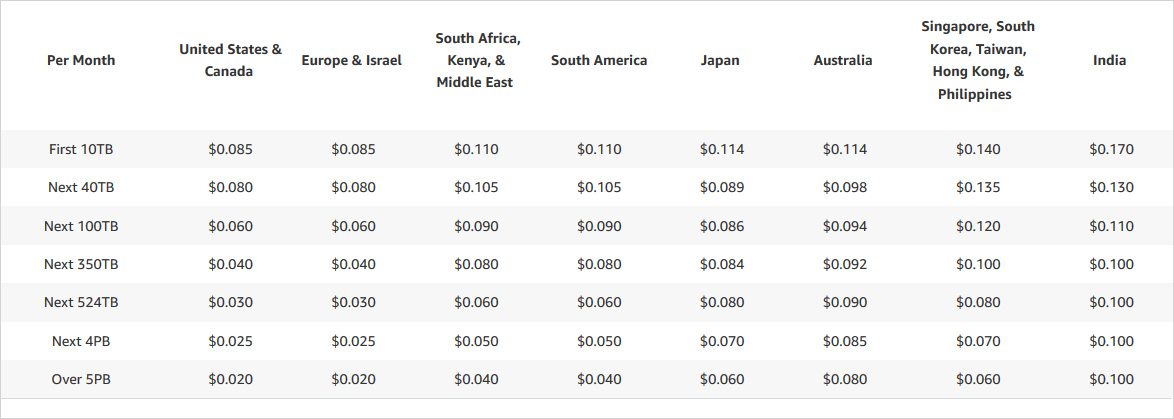
Let’s have a look at various features expected from a CDN provider and which one offers more efficient feature:
Cloudflare vs Cloudfront: Comparing Key features

| Cloudflare vs Cloudfront Features | Cloudfront | Cloudflare |
|---|---|---|
| Dynamic content delivery | Yes | Yes |
| Small file delivery | Yes | It supports GZIP compression, AutoMinify, image rendering, etc. |
| Large file delivery | Yes | Yes |
| Live Video | Yes | No |
| Video on demand | Yes | Costs extra |
| Image optimization | No | Yes, automatic |
| DNS | Yes | Yes |
| WAF | Yes | Yes |
| Private CDN | No | No |
| DDoS mitigation | Yes | Yes |
| No. of Servers | 113 (as of 2018) | 200+ |
| Free version | Yes | Yes |
| Instant setup | Yes | Yes |
| Purge time | Average 1 minute | 5 seconds |
| APIs | Purge, analytics, configuration | Purge, analytics, configuration |
Cloudflare vs Cloudfront: Which one suits you better?
Cloudflare and Cloudfront, both are well-established names in the CDN industry. They both offer a wide range of features, which is why it can be confusing when it comes to choosing one of those. Well, one way is to consider the requirement of your website and see which one suits the best. For instance, which one fits your budget better, or which one can offer better security against security threats. Cloudflare is mostly used by entry-level websites as it offers an unlimited free version which is best suitable for a website with standard content and average traffic. Cloudflare also offer very easy integration. However, Cloudfront is mostly favored by mainstream companies and well-popular brands with huge online presence. Some of the known brands using Cloudflare’s CDN services are StackOverflow, Montecito Bank, Embed.ly, Codeguard, etc. whereas, some of the big brands using Cloudfront are Nasa, IMDB, Zendesk, PBS, etc.
If you are a newbie and want to try CDN services, go for Cloudflare, it is easy to install, free of cost, and offer some great security features. If you have a diverse audience base and you want to offer efficient video streaming to your audience, go for Cloudfront.
Cloudflare vs. Cloudfront: FAQs (Frequently Asked Question)
Q1. Why do I need Cloudflare?
If your small to mid sized website is having an audience from different geographic areas and you want to offer the same experience to your international audience as your local audience, then you need Cloudflare. It will offer a seamless web experience to your users.
Q2. How Cloudflare speeds up my site?
Cloudflare has a wide network of servers/data centers strategically placed in different areas. It caches the static content on its network and responds quickly to the user’s request with the cached content. Basically, it reduces the latency time and offers great performance.
Q3. Why do I need Cloudfront for my site?
Cloudfront is a pay-as-you-go CDN model that helps you offer your end-user a seamless web experience by delivering them the content they requested via its nearest Edge Location. You need Cloudfront if you want to secure your website from security threats and offer a faster delivery to your users.
Q4. Can I use other Amazon services with Cloudfront?
Yes, Cloudfront offers the capability of easy integration of Amazon Web Services(AWS) with Cloudfront CDN.
Q5. Can I use Cloudflare for free?
Yes, Cloudflare offers an unlimited and unmetered free version that offers some standard CDN and security features suitable for a website with standard content and average traffic.
Related reading
Can Your Hosting Server Location Affect The Success Of SEO?
Optimize Your WordPress Website to Minimize Load Time
Build a Stunning Website in Minutes with TemplateToaster Website Builder
Create Your Own Website Now
Great post! Cloudflare is the leading cdn provider, totally recommend it
Please review the free version of CloudFlare cdn.
Looking for a firewall plugin for Cloudfront cdn. Please recommend any.
Cloudflare is one of the best software in CDN and it also provides the best security system to our website to make it safe from scammers.
Both are famous software for your business to make your website secure.
Cloudfront is a faster CDN service that’s why people are like to use this the most.
Wow! I must say your articles are the best for beginners to understand every little thing related to software and IT services, Thanks for porting.
Nice post, thanks for providing us such wonderful information from time to time, I really appreciate your efforts.
Amazing! I was looking for this article for a long time, now I got the right one.
Website speed and security both are must and we should follow the security systems for it.
Helpful things re always help us in the future for betterment that why I read all of your articles, which help me at every step of marketing, designing as well as development.
How Cloudfront is used with AWS?